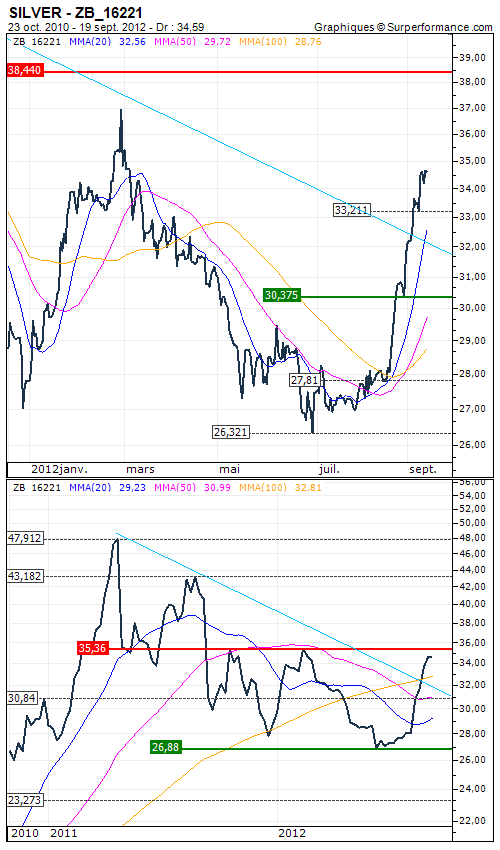Silver : Faster than gold
By Oscar Salza
Also for this reason, most of the precious metals have reacted dynamically in recent weeks. All the the comments are emphasize the gold’s bullish trend, but in the shadow of gold, silver responds directly to the monetary events.
However, its volatility gives it a special interest. Its industrial use generates a variability of demand, which differentiates the silver from gold. This could be an additional incentive to investors in order to focus on the silver with a view to economic recovery and thus an increase in the worldwide production of goods made with silver metal. The industrial purchases represent for about half of global demand. Indeed silver is appreciated for its physical qualities as ductility and conductivity. The jewelry remains an important customer; it absorbs 25% of the production.
The supply is not very flexible. The two biggest silver’s producers, which are Mexico and Peru, provide one third of the worldwide production. The mines in North America suffer from a sharp decline due to exhaustion of deposits, exploited for 150 years. The extraction of silver is realized frequently (70% of times) with other minerals such as zinc and cooper. It’s rare to find mines exclusively dedicated to gray metal. Consequently, if the silver’s production is linked to these two metals, the price is more correlated with gold.
Technically, the asset has begun its upward trend after the contact with USD 27. This recovery has allowed the break out of important resistance and weekly moving averages showing a positive consensus.
Silver could find first obstacle at USD 35, but the strength of bullish trend could allow aiming higher targets as USD 43. However, we advise to place a stop loss order below USD 29.





